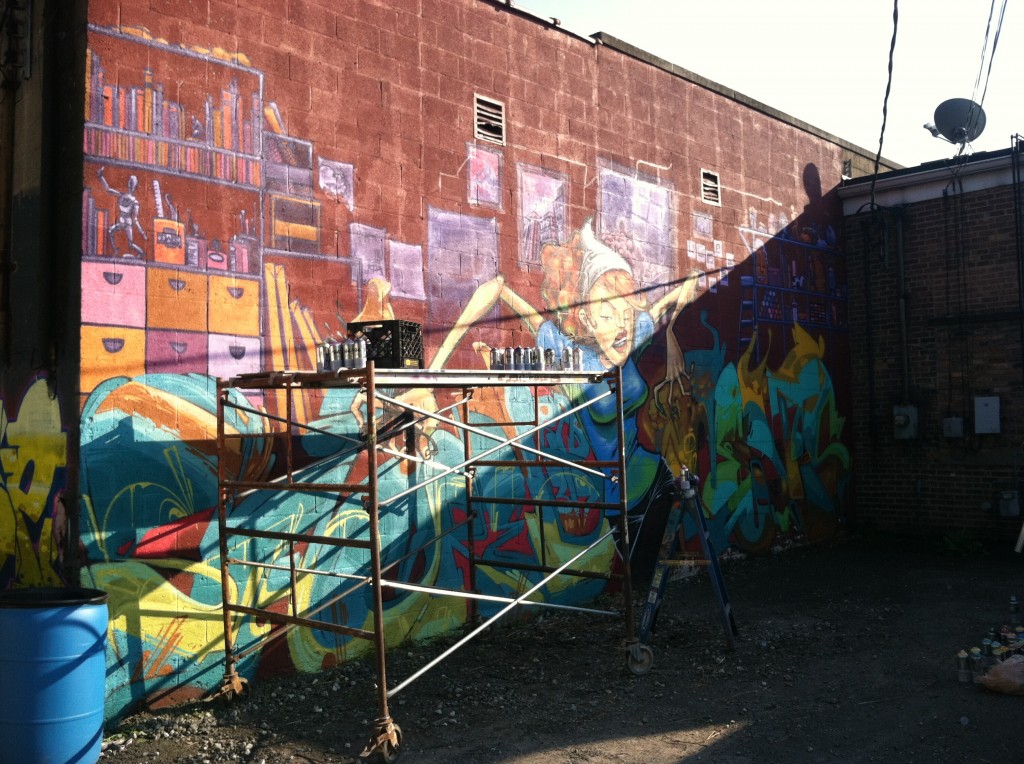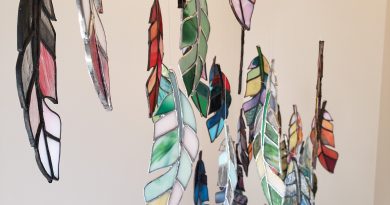Public art, small-town challenges, and big questions
Gary’s Miller Beach Arts and Creative District hosted a street fair in June centered around several graffiti art mural completed by about a dozen artists around Lake Street. Dubbed the Lake Effect festival, the event featured live music, food and drink, and a number of vendors, closing off Lake St. from Miller Ave. up to 4th Ave. The MBACD raised money through a successful, modest Kickstarter campaign and the event was given acclaim in the honorable Northwest Indiana Times. I’ve been following a recent stir the event has caused on Miller’s Facebook page which raises some questions about the flexibility of what defines a community (or lack thereof).
At 123 comments for a post on a group page that only has 541 members, the discussion began with resident Mike Siroky decrying what he called “fanciful gang signs,” going so far as to call the artwork a “smack in the face of decency.” One resident complained that she wishes the artists had “painted beach scenes…to promote the natual beauty Miller possesses,” while another complained that “I think it cheapens the town.” Hellfire and brimstone rhetoric calling on legislators far and wide for the removal of the graffiti (which looks quite a bit better than 1950’s vinyl and aluminum window frames on vacant storefronts) gave way to bickering, including snarky, racist commentary on, of all people, Trayvon Martin (whose name was misspelled, even). All over some people coming into a community and painting murals on buildings? Hold the phone.
Kids, I’m gonna turn this car around, and we’ll drive straight back to the nadir of Rust Belt urban decline whence we came!
Controversy over the question of graffiti as public art is not novel (a few quick peeks around the Googlesphere will tell you this). But, digging into the comments, you can tell that the headbutting and grumbling is little more than complaints by one resident that another one “wasn’t a legitimate enough” resident of Miller Beach because he or she didn’t go to high school there and instead grew up worlds away in Aetna (Aetna is a former factory town a few hundred feet down the road). Reminds me of St. Louis. (Is this something small, dying cities grumble about?)
To revisit the event itself, it was a pretty great display of community, whether black, white, wealthy, or un-wealthy. We ate and drank to our hearts’ contents and spent but a modest sum of money. We danced to a great jazz band. (Editorial note: Unlike a Chicago street fair, I didn’t get tackled to produce identification for purchasing alcohol, didn’t have to pay $7 for a 12 oz. beer, and wasn’t asked for a “donation” by a pair of six-foot tall bouncers at the entrance.) Our party included three people, all of whom had a great time, and it was great to see artists doling out the love to some buildings on Lake Street, which would not unfairly be termed a lackluster, mid-century drab, central fixture of the Miller community.
As I have often done in St. Louis, I typically leave well enough alone defending the city against racially-motivated detractors every time I go into this or that small business (Hyde Park, St. Louis’ own Piekutowski’s Sausage Shop or North Broadway’s Tobin Hardware), but this case was unique and I felt the need to intervene (whether an ignored comment or two can be called intervention, I do not know).
The debate is, in part, about the nature of public art itself. Being public means that artistic products must withstand a substantial amount of scrutiny from every vulture perched on a soapbox alongside every ordinary, moderate, centrist citizen. It also means that it is on display in perpetuity until it is destroyed, degrades on its own, or is moved somewhere else (murals stick around for awhile). Indeed, it is also about the nature of art itself. Even nearly a century after Dada shocked critics into the outrageous notion that art could exist outside an ornate frame on a gallery wall, we’re still having debates about what is or isn’t art as much as we’re having debates about what looks good and what doesn’t. In this case, the debate is pretty balanced between those two questions.
But at some level, the uproar is really about change. Residents participating in this conversation probably would still be disgusted if Edgar Degas himself had painted The Dance Class on the wall of Donnell Currin, Jr.’s garage on Lake Street. But it’s as much about the change of culture as it is about the change of actual space. I was quick to voice my opinion that ideas about community, art, and culture can’t remain static as the world changes, and that, indeed, very few residents of Miller had parents who also grew up there (Miller was annexed to the city of Gary in 1917 but remained largely undeveloped until the 1940’s and 1950’s), so it was foolish to sling mud based on what high school someone went to. Those folks with beach houses in the 1930’s and 1940’s probably woke up one morning to see a bevy of carpenters putting up a cluster of houses across the street and probably weren’t too happy about it—but they, too, survived, and Miller survives as the single most intact part of the city of Gary, a part I think is pivotal in its culture and future development.
Let’s not get carried away. A few constants of urban society? Space changes, citizens grow old and die, new citizens are born and grow up—and nothing exposed to the rain and the snow is permanent.



